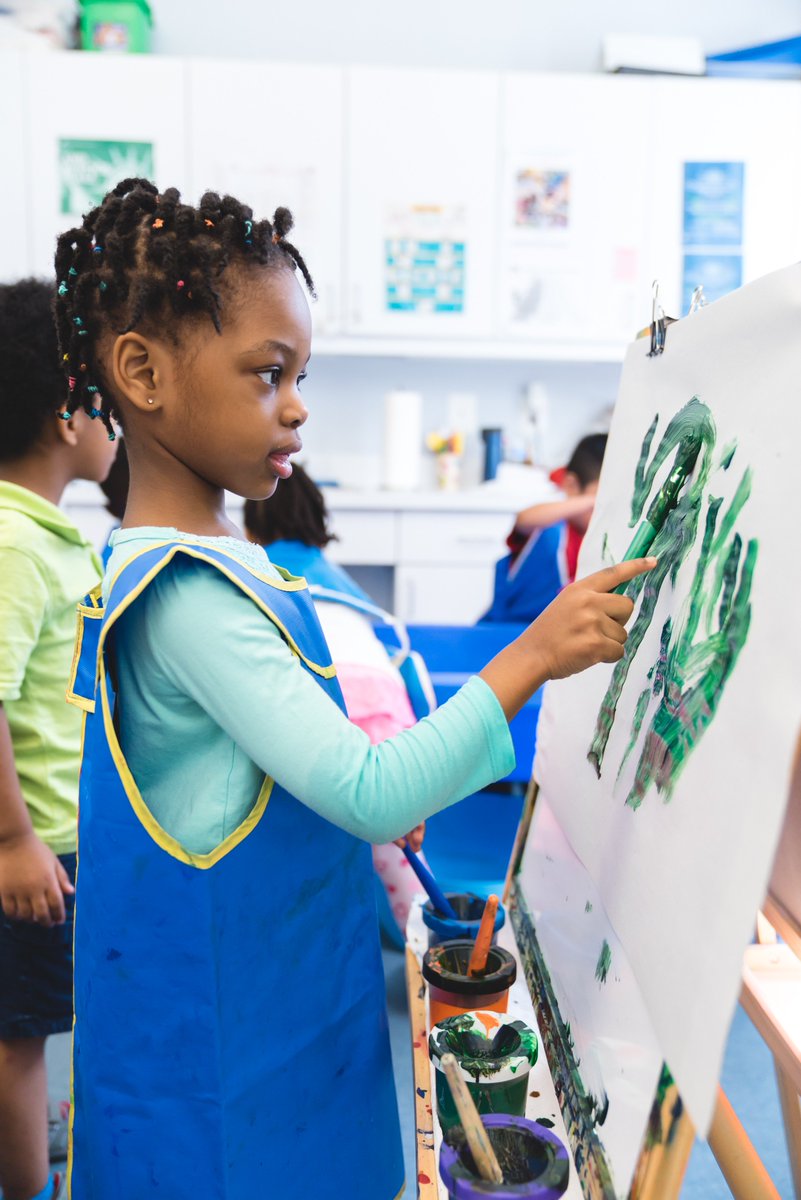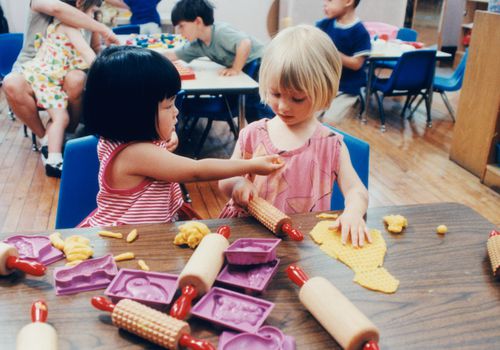 What if you sank a lot of money into a Pre-K program to try to close achievement gaps and instead you ended up with the same gaps and increased discipline problems? Does that seem like something out of a dystopian novel? Unfortunately, it’s not.
What if you sank a lot of money into a Pre-K program to try to close achievement gaps and instead you ended up with the same gaps and increased discipline problems? Does that seem like something out of a dystopian novel? Unfortunately, it’s not.
A recent study from Vanderbilt University examined the effect of a publicly-funded Pre-K program on low-income children and found that while the initial effect on school readiness was positive, the long-term result was negative for both academics and discipline.
The study was of 2,990 low-income children in Tennessee who had applied for publicly funded Pre-K. It’s an important finding because Tennessee serves about 18,000 low-income kids in this program and has staked a lot of resources on the idea that it would have a positive academic effect on students and help close achievement gaps.
Students were followed from Pre-K through grade 6. By grade 2, they were underperforming the control group on state tests and the negative effect just kept growing as they moved up the grades. By grade 6, the students who had participated in the program were doing worse on state tests, and more likely to be in special education, and more likely to be suspended for major offenses. This is an absolute trifecta of bad news and I imagine the researchers had to run the numbers several times before they accepted what they were seeing because in many ways it is counterintuitive that intensive early prep would lead to such poor outcomes. In particular, it seems implausible that this kind of early intervention wouldn’t be instrumental in closing the achievement gaps between wealthy and poor children.
To understand why this happened, it helps to know a little bit about the Pre-K program in question. It was designed to give low-income kids an academic boost prior to entering Kindergarten by offering practice in early reading and math skills. To that end, the children spent time tracing letters and numbers on worksheets, being drilled on letters and numbers, listening to teachers lecture for 10 minutes at a time. It’s fair to say that the program was very skills-focused. Intuition says it should have worked. Research says it didn’t. In light of the findings, Tennessee’s governor came out and said he still believes in the power of a quality preschool. So do I, but quality might be the key issue because the contrast between this program and the programs selected by parents with more financial resources couldn’t be more different.
was designed to give low-income kids an academic boost prior to entering Kindergarten by offering practice in early reading and math skills. To that end, the children spent time tracing letters and numbers on worksheets, being drilled on letters and numbers, listening to teachers lecture for 10 minutes at a time. It’s fair to say that the program was very skills-focused. Intuition says it should have worked. Research says it didn’t. In light of the findings, Tennessee’s governor came out and said he still believes in the power of a quality preschool. So do I, but quality might be the key issue because the contrast between this program and the programs selected by parents with more financial resources couldn’t be more different.
Private preschools tend to focus on play and exploration — art, music, movement, and play centers that explore different modes and styles of interacting from finger painting to pretending to be doctors and firefighters to building with a variety of materials. Things like colors, numbers, vocabulary, and letters tend to be organically embedded in read-aloud stories, or art, or total body movement, or building. The emphasis is on play and discovery and the academic skills slip in alongside where they make sense. And here’s why I say this finding isn’t (or shouldn’t be) a big surprise: many of the countries that do the best on international measures of academic success (I’m looking at you, Finland) don’t begin any formal education until age 6 or 7; prior to that their preschool programs are entirely play-based. Most kids in these systems get 2 years of government-funded, play-based, exploratory learning.
 And here’s a side observation of mine: play/discovery based preschool programs in many ways resemble gifted and talented programs where kids can try a lot of things and stay longer with things that really interest them. They aren’t pigeon-holed into a particular activity or made to do things a particular way. They’re just allowed to explore and teachers are there to help them make meaning from what they discover — just as preschool teachers help kids make meaning from their play. My favorite study of all time found that if “non-gifted” kids are treated like they’re gifted and given the supports they need, they go on in large numbers to be identified as gifted. (Johnson, S., Starness, W., Gregory, D., & Black, A. (1985). Program of assessment, diagnosis, and instruction (PADI): Identifying and nurturing potentially gifted and talented minority students. Journal of Negro Education, 54(3), 416-430) That seems very apropos here. This is a real issue between low income kids and their wealthier peers where the disadvantaged are drilled in the basics while the advantaged have room to explore and grow through things that interest them. It shouldn’t come as a surprise that CMSi sees this exact dichotomy in a lot of middle and high schools with lower achievement and less engagement for those relegated to the basics.
And here’s a side observation of mine: play/discovery based preschool programs in many ways resemble gifted and talented programs where kids can try a lot of things and stay longer with things that really interest them. They aren’t pigeon-holed into a particular activity or made to do things a particular way. They’re just allowed to explore and teachers are there to help them make meaning from what they discover — just as preschool teachers help kids make meaning from their play. My favorite study of all time found that if “non-gifted” kids are treated like they’re gifted and given the supports they need, they go on in large numbers to be identified as gifted. (Johnson, S., Starness, W., Gregory, D., & Black, A. (1985). Program of assessment, diagnosis, and instruction (PADI): Identifying and nurturing potentially gifted and talented minority students. Journal of Negro Education, 54(3), 416-430) That seems very apropos here. This is a real issue between low income kids and their wealthier peers where the disadvantaged are drilled in the basics while the advantaged have room to explore and grow through things that interest them. It shouldn’t come as a surprise that CMSi sees this exact dichotomy in a lot of middle and high schools with lower achievement and less engagement for those relegated to the basics.
There were some other factors in the Tennessee program that are also important to consider — the lack of a system to ensure that best practices were being followed, a physical environment that ate up a lot of class time just getting kids from one area to the next, and a lack of funding for the program as a whole, in spite of the decision to scale it up to 900 classrooms. Some of these, like the physical layout of the preschool space, may have been part of the reason for discipline/suspension increases in the later grades. If so, that’s a critical thing to know because suspension has a racial component wherein Black children, especially Black boys, are suspended at greater rates than other kids, even in preschool. I have to say that again: even in preschool. And suspension of any kind has long-term negative effects on kids.
Vanderbilt has a good article detailing the changes they think should happen in Pre-K programs to ensure this negative effect isn’t replicated and NPR has a good interview with one of the researchers who speculates on the whys behind the findings. One thing she said stuck with me: the idea that depending on this one program to ameliorate the failings of the system and the wider society was a lot of pressure and created an unrealistic set of expectations that no single program could hope to meet. This dovetails with something we say a lot around here: there are no magic bullets in education. No one program is going to fix everything. Instead, we need a lot of pieces to come together to form a network of support for learners.
We know, however, that high quality preschool programs do work and that some of their effects on income, health, and relationship stability are very long term but also statistically observable. Perhaps we need to remind (again) those who legislate and fund these programs that kids aren’t machines where we input raw data and pump out understanding, that instead we need to allow for human needs like community, trust, support, wonder, relevance, and choice. ‘Drill and kill’ has never been very effective. It’s not that surprising that it doesn’t work with the smallest humans either.
